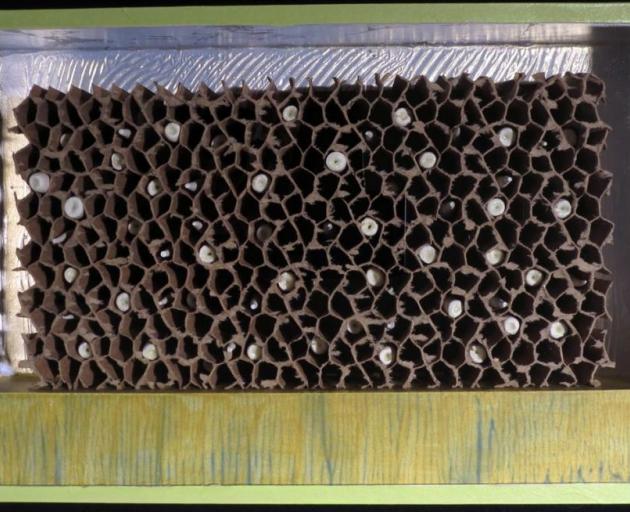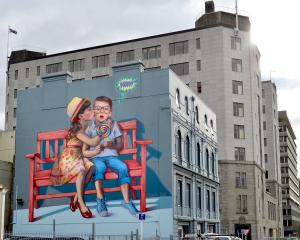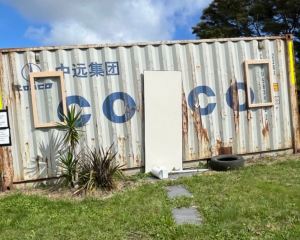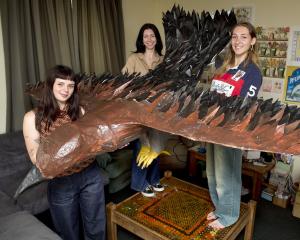
‘‘Diorama: Games with Colour and Light'' by Marion Mertens (Moray Gallery)
Moray Gallery this week opened ‘‘Diorama: Games with Colour and Light'', an exhibition of miniature sculptural works by Marion Mertens.
More than 30 of Mertens' small wall-mounted dioramas are on display in an exhibition of charming intricacies.
Mertens recycles materials and objects to create three-dimensional scenes that are placed in small glass-fronted boxes, the biggest the size of a shoebox.
Mertens' displays use materials and visuals from life, but are not representational of the real world.
Instead Mertens creates abstract and surreal suggestions of the natural world using careful arrangements of colour, shapes and pattern.
Works such as Choir No1 and Annelid Family No1 show small organisms sculpted out of clay.
These works present the sculpted creatures in a line up like a scientific specimen display.
Similarly, Whakama and Whakahi appear to be museum displays of organic structures.
A group of works titled Coverslips play further on the theme of scientific display, as Mertens uses scientific coverslips to create crystal-like geological forms.
Unlike museum displays, however, these dioramas feature pastel and metallic paint and floral patterned paper.
Mertens writes in the exhibition text, ‘‘I hope that they impart to the viewer some of the delight I had in making them''.
Mertens is certainly successful in this undertaking and her work is a charming display of a playful art practice.

‘‘Heavy to Hold'', by Ana Iti (Blue Oyster Art Project Space)
The Blue Oyster's summer resident, Ana Iti, opens the gallery's 2016 programme with ‘‘Heavy to Hold'', a contemplative exhibition that looks at Otago Harbour's historic seawall.
The residency offers the gallery as a dedicated studio space for a four-week period in January.
Partnering with the Caselberg Trust, the residency also includes accommodation at the trust's Broad Bay cottage.
The daily journey between the cottage and the gallery introduced Iti to the Blackhead rock sea wall, which is a contentious topic in local history.
Construction of sea walls began around Otago Peninsula in the late 1860s, around the same time that Maori political prisoners from Taranaki were transported to Dunedin Prison and forced to work on the infrastructure of the city and harbour.
Iti has created her own version of the wall out of local Blackhead rock in the middle of the gallery space.
The wall is a dense, knee-high construction that serves as a physical manifestation of the wall and its surrounds.
In the gallery's second room Iti shows a looped video of the seawall as viewed when travelling down Portobello Rd.
The video is accompanied by recordings of Kai Tahu kaumatua Edward Ellison and local archaeologist Jill Hamel telling stories relating to the wall.
Embracing her role as a visitor in Dunedin, Iti presents her explorations in Duneidn history in a thoughtful and evocative exhibition.

‘‘New Works'', by Gerald Smith (Margaret Freeman Gallery)
Located in Moray Pl, The Margaret Freeman Gallery is dedicated to supporting and exhibiting marginalised artists.
The gallery regularly hosts solo and group exhibitions, and in particular serves as an exhibition space for the artists that attend adjoining Studio2, a studio space for artists with disabilities.
Gerald Smith, a member of Studio2, has a solo exhibition at Margaret Freeman.
The exhibition is a collection of new paintings completed by Smith since he moved to Dunedin midway through last year.
The paintings are an expressionistic display of colour, with several bright hues dabbed in layers on both large canvases and small paper works.
Some works show a layering of colours, while others see colours restricted to corners or along lines of the work.
The canvas works are particularly interesting as the stronger medium supports Smith's thick paint application and creates a textured field of colour.
Some of Smith's simpler works show the artist's movement as the gestural paint application directs the paint in lines and swirls over the canvas.
Smith's art is an example of ‘‘outsider art'', art that is produced outside of an academic setting and with no relation to art historic traditions.
And, like most outsider art, it is a wonderful display of raw creativity and artistic expression.
-by Samantha McKegg












